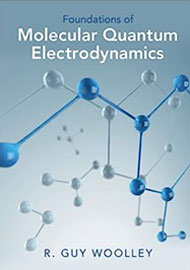
If you've heard the quip that biology is mainly chemistry, chemistry is mainly physics, and physics is mainly math, this book may seem to confirm it. For someone not well versed in chemistry, the preface makes some scary and exciting promises of connecting theoretical chemistry with physics. It turns out that much of the treatment is indeed physics (which, in turn, is of course a lot of math).
Although the book starts with basic theoretical chemistry laws (conservation of mass, stoichiometry), it quickly moves on to physics: electromagnetism, quantum theory and, bringing it all together, non-relativistic quantum electrodynamics (NR-QED). This should maybe not be surprising, given that the author is a professor emeritus of physical chemistry.
There are no problems or exercises, and the references in each chapter are a relatively brief list, but the book builds gradually and logically toward a solid understanding of NR-QED. An extensive index includes many familiar physics terms (and famous physicists), but few if any terms from chemistry (or chemists). A small number of black-and-white figures are included—many of them Feynman diagrams.
Aside from the relatively small amount of chemistry and the extensive amount of math required to read this book, it seems that it would work well as a textbook for a graduate course, and very well as a reference for a professional in the field.
Review by Bogdan Hoanca, University of Alaska Anchorage, USA.
The opinions expressed in the book review section are those of the reviewer and do not necessarily reflect those of OPN or its publisher, Optica (formerly OSA).

